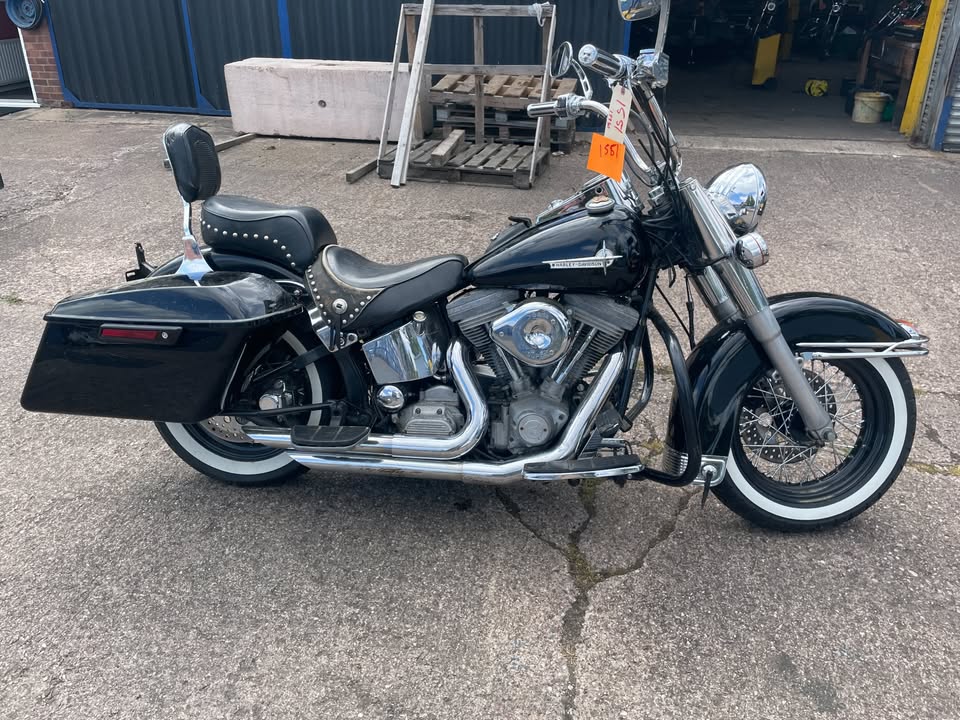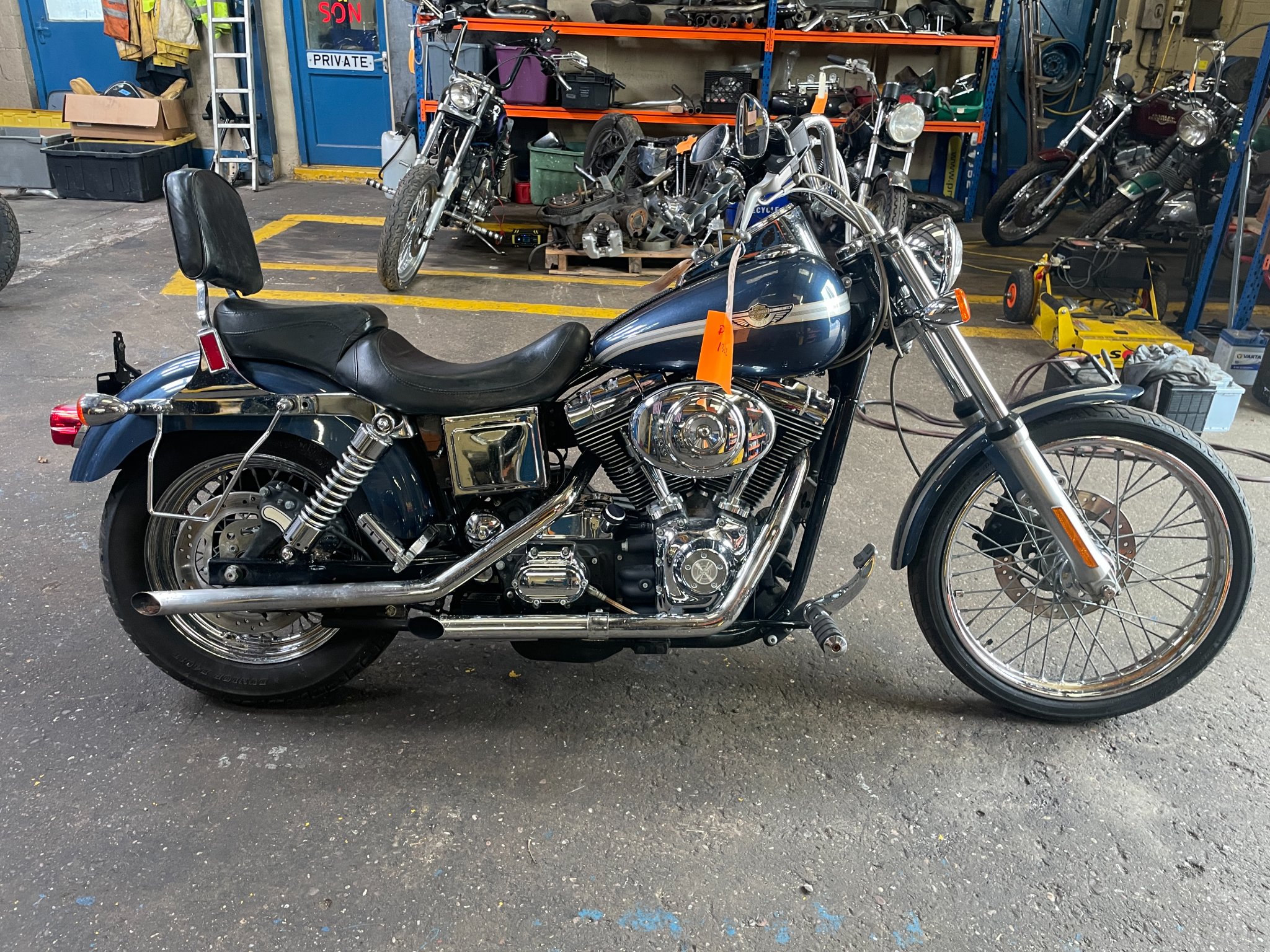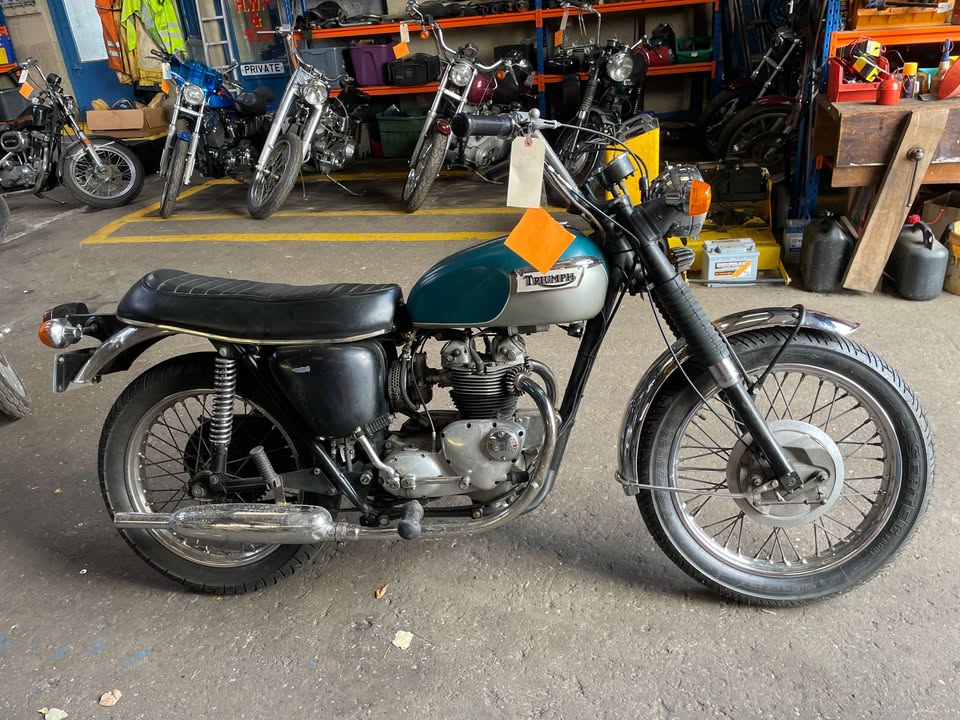Classic and Classy Motorcycles Ltd
Vintage and Classic Motorcycle Importers
1987 Harley Davidson Heritage Softail FLST 1340cc Ref 1551

1987 Harley-Davidson Heritage Softail FLST 1340cc – Classic Looks, Modern Backbone
Historical Context
The 1987 Harley-Davidson Heritage Softail FLST marked a significant point in Harley’s evolution. Introduced just a few years after the Softail frame debuted in 1984, the Heritage Softail was designed to evoke the nostalgic style of Harley’s post-war era, particularly the 1940s and early ’50s Hydra-Glide models. Harley-Davidson, under new management after regaining independence from AMF in 1981, aimed to reestablish its identity through models that combined vintage appeal with improved engineering. The FLST Heritage Softail embodied this strategy, blending retro looks with the power and reliability of the Evolution engine platform.
Technical Specifications and Performance
• Year: 1987
• Make: Harley-Davidson
• Model: FLST Heritage Softail
• Engine Displacement: 1340cc (80 cu in)
• Engine Type: Air-cooled, 45-degree Evolution V-twin
• Compression Ratio: 8.5:1
• Carburetion: Constant velocity carburetor
• Ignition System: Electronic
• Transmission Type: 5-speed manual
• Final Drive: Belt
• Cooling System: Air-cooled
• Fuel Capacity: Approx. 4.2 gallons
• Braking System: Disc brakes front and rear
• Dry Weight: Approx. 650 lbs
• Top Speed: Around 95–100 mph
Technical Advancements
The Heritage Softail retained the rigid-frame appearance of older Harleys thanks to its hidden rear suspension, a major innovation at the time. The 1340cc Evolution engine was the real technical leap—it offered increased durability, less vibration, and improved oil control compared to the outgoing Shovelhead. The switch to belt final drive reduced maintenance, and electric start became standard, making the FLST more accessible for a broader range of riders.
Evolution of the Model
The Heritage Softail FLST was the early version of what would become one of Harley’s most iconic sub-models. Later models would adopt the “Heritage Softail Classic” designation and introduce leather saddlebags, whitewall tires, and studded seats. The 1987 version was more stripped down and resembled a blend between old-school styling and modern function, paving the way for the eventual success of the FL-series Softails through the '90s and 2000s.
Competitors in the Market
In 1987, Harley faced growing competition from Japanese manufacturers like Yamaha’s Virago XV1100, Suzuki’s Intruder, and Honda’s Shadow 1100. While these bikes often offered smoother engines, lower prices, and more features, none could match the classic American styling and feel of the FLST. The Harley appealed to riders looking for heritage, character, and a connection to motorcycling’s past, something competitors couldn't replicate with metrics alone.
Legacy and Collector Appeal
The 1987 FLST Heritage Softail holds value as one of the first iterations of a line that would become a cornerstone of Harley’s touring and cruiser lineup. Its balance of retro design and reliable performance makes it a desirable bike among collectors and restorers. It captures a specific moment in Harley’s history—a rebirth of sorts—when the company began confidently blending old-school aesthetics with more refined engineering.
Find Classic Motorcycles
Stay in the loop - Subscribe for Updates
One email notification a month when a new shipment arrives.
 2003-Harley-Davidson-Anniversary-Dyna-Wide-Glide-FXDWG-1450cc-Ref-D1322
2003-Harley-Davidson-Anniversary-Dyna-Wide-Glide-FXDWG-1450cc-Ref-D1322 1971-Triumph-500cc-T100c-Tiger-Ref-1561
1971-Triumph-500cc-T100c-Tiger-Ref-1561